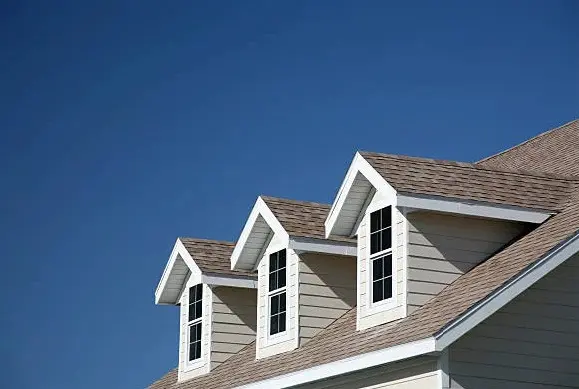When monthly energy bills start climbing, most homeowners blame outdated appliances or drafty windows. But one of the biggest culprits often goes unnoticed—the roof. Far from being just a shield against rain and snow, your roof plays a major role in how efficiently your home regulates temperature. If it’s old, damaged, or poorly designed, your roof could be silently draining your wallet.
How Roofs Impact Energy Efficiency
Your roof is essentially the first line of defense between indoor comfort and the outdoor elements. It influences your home’s energy use in several ways:
- Heat absorption: Dark, worn shingles absorb more heat, making your air conditioner work harder in summer.
- Insulation effectiveness: Damaged roofs often mean wet or compressed insulation, which loses efficiency.
- Airflow and ventilation: Without proper attic ventilation, heat and moisture build up, raising both heating and cooling costs.
- Reflectivity: Modern shingles are engineered to reflect solar energy, lowering surface temperatures.
If your roof isn’t optimized in these areas, you’re paying more each month just to maintain comfort.
The Cost of Poor Ventilation
Attic ventilation is one of the most overlooked factors in energy efficiency. In summer, trapped hot air turns attics into ovens, which pushes heat down into living spaces. In winter, poor ventilation allows moisture to accumulate, reducing insulation effectiveness and creating conditions for mold.
The result? Higher utility bills year-round. A well-designed system balances intake and exhaust, keeping temperatures and humidity stable.
Why Materials Matter
Not all shingles are created equal. Traditional asphalt shingles do the job, but premium options are engineered to deliver better efficiency and durability. Products like GAF Grand Sequoia AS Shingles are designed with advanced coatings and layered construction that help regulate temperatures more effectively while still providing superior storm resistance.
Modern shingle systems offer:
- Better solar reflectivity for hot climates.
- Stronger sealing to reduce drafts.
- Improved water resistance to protect insulation.
Upgrading materials is one of the simplest ways to reduce long-term energy costs while also boosting curb appeal.
Signs Your Roof Is Raising Your Bills
If your energy bills keep rising, your roof may be partly to blame. Common red flags include:
- Uneven indoor temperatures between floors.
- Constantly running HVAC systems.
- Excessive attic heat in summer.
- Icicles or ice dams in winter.
- Moisture stains on ceilings or walls.
These are all indicators that your roofing system is underperforming, costing you money each month.
Repairs vs. Replacement
Sometimes, simple repairs can improve efficiency—like sealing leaks, replacing missing shingles, or upgrading attic ventilation. But if your roof is nearing the end of its lifespan, replacement may be the smarter choice. Investing in premium shingles like GAF Grand Sequoia AS Shingles not only lowers energy costs but also provides long-term protection from weather extremes.
The Role of Professional Contractors
DIY repairs rarely address the root of energy inefficiency. Professional contractors bring diagnostic tools, like thermal imaging, to identify exactly where heat is escaping or moisture is infiltrating. They also ensure that materials are installed to manufacturer specifications, which is critical for both performance and warranty coverage.
Long-Term Value of an Efficient Roof
While a roof replacement feels like a big expense, the savings can be significant:
- Lower monthly utility bills.
- Reduced strain on HVAC systems, extending their lifespan.
- Increased resale value from energy-efficient upgrades.
- Better indoor comfort without relying on constant heating or cooling.
Energy savings, combined with fewer repair costs and higher home value, make a high-quality roof one of the most rewarding investments you can make.
Moving Toward Smarter Roofing Choices
Energy efficiency isn’t just about insulation and appliances—it starts at the top. If your bills are creeping higher and your comfort is slipping, your roof could be the reason. With modern materials like GAF Grand Sequoia AS Shingles and proper installation, you can cut monthly costs, improve comfort, and protect your home for decades.
Also Read-Complete Checklist for Preventive Home Maintenance
